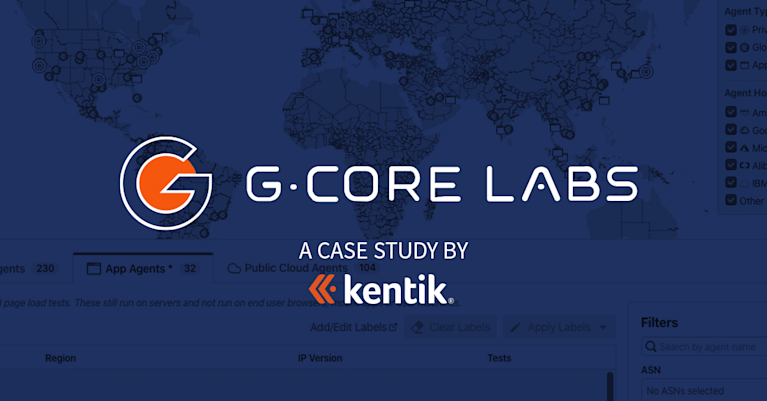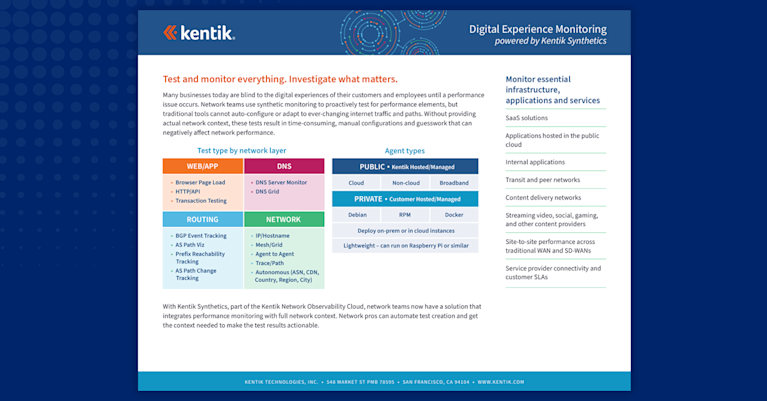What is End User Experience Monitoring (EUEM)?
In today’s digital world, it is crucial for businesses to understand and optimize the experiences of their users. End User Experience Monitoring (EUEM, or simply “User Experience Monitoring”) is a key component in achieving this goal. EUEM focuses on monitoring and measuring the performance of applications and websites from the end user’s perspective, helping organizations identify issues and improve user satisfaction. In this article, we will explore the concept of EUEM, its importance, and how it fits within the larger scope of digital experience monitoring.
What is End User Experience Monitoring? (EUEM)
End User Experience Monitoring (EUEM) is the process of measuring and managing the performance and overall experience of real users interacting with websites and applications. Unlike synthetic monitoring, which simulates user interactions, EUEM tracks real users and their experiences, allowing organizations to gain insights into actual user behavior and satisfaction. By focusing on real users, EUEM helps businesses align their performance metrics with business objectives and outcomes, ensuring a high level of user satisfaction and loyalty.
How Does End User Experience Monitoring Work?
End User Experience Monitoring (EUEM) solutions work by collecting and analyzing data on user interactions with applications and websites, enabling organizations to gain insights into their users’ experiences. EUEM tools measure performance metrics, identify issues, and help optimize user experience, ensuring the seamless functioning of digital services.
Components of End User Experience Monitoring
EUEM solutions typically rely on a combination of hardware and software components to monitor user experience effectively. These may include servers, data storage devices, and network infrastructure, along with software tools for data collection, analysis, and visualization.
EUEM also involves collaboration among various teams, such as IT, customer support, and product development, to ensure a comprehensive approach to monitoring and optimization. Real-time analytics and sentiment data play a crucial role in gaining insights and understanding user behavior.
Types of Monitoring Tools Available
There are several EUEM tools available that impact IT observability, including:
- Application Performance Monitoring (APM): APM tools monitor the performance of web applications and mobile apps, tracking metrics like response times, error rates, and user satisfaction.
- JavaScript Injection: This technique involves embedding JavaScript code into web pages to collect data on user interactions and performance metrics.
- End User Monitoring: This type of monitoring focuses on the user’s experience with an application, tracking metrics such as page load times and error rates.
- Real User Monitoring (RUM): RUM tools collect data on real user interactions with a website or application, providing insights into user behavior and performance.
- Synthetic Monitoring: Synthetic monitoring tools simulate user interactions with an application or website, helping to identify potential performance issues before they affect real users.
- Transaction Monitoring: This type of monitoring tracks the performance of specific transactions or user interactions within an application, helping to identify bottlenecks and optimize workflows. For more on this topic, see “Synthetic Transaction Monitoring”.
- API Monitoring: API monitoring tools track the performance of application programming interfaces (APIs) that facilitate communication between different software components, ensuring seamless integration and data exchange.
These monitoring tools, along with others available in the market, enable organizations to gain a comprehensive understanding of their users’ experiences and optimize their digital services.
The definitive guide to running a healthy, secure, high-performance network

EUEM and Digital Experience Monitoring
EUEM is an essential component of digital experience monitoring (DEM). While EUEM specifically focuses on the end user perspective, DEM encompasses the entire user journey, including the performance of web applications, network infrastructure, and other elements that contribute to the user’s overall experience. Complete visibility into the entire user journey is crucial for organizations to effectively monitor and optimize their digital services.
Why SaaS Organizations Need End User Experience Monitoring
In recent years, remote work has become increasingly common, with employees relying on SaaS applications to access critical business tools and stay productive. To ensure a seamless experience for remote employees, organizations must understand the performance and outcomes of their end users. EUEM is a vital tool in this regard, as it provides insights into application performance, identifies potential performance issues, and helps organizations improve the overall user experience. By implementing EUEM, SaaS organizations can enhance employee productivity and ensure their business objectives are met.
Benefits of End User Experience Monitoring
EUEM offers several significant benefits for businesses, including:
- Improved user satisfaction and loyalty: By monitoring real user interactions and identifying performance bottlenecks, EUEM enables organizations to address issues proactively, resulting in higher user satisfaction and increased loyalty.
- Increased productivity and efficiency: Real-time analytics provided by EUEM tools help organizations optimize application performance, leading to improved employee productivity and operational efficiency.
- Reduced downtime and costs: EUEM helps identify and resolve performance issues before they escalate, reducing downtime and associated costs.
- Enhanced security and compliance: EUEM tools can also help organizations monitor and maintain compliance with industry standards and regulations, ensuring a secure user experience.
Implementing End User Experience Monitoring
Setting up EUEM tools and systems involves several steps, such as selecting the right monitoring tools, establishing performance metrics and benchmarks, and integrating the EUEM solution with existing IT processes and systems. Key considerations include error tracking, page load metrics, network paths, load times, and comprehensive alerting to identify the root cause of performance issues.
Best Practices for End User Experience Monitoring
To make the most of EUEM, organizations should follow these best practices:
- Regularly review and analyze data: Continuously monitor performance metrics and analyze collected data to identify trends and potential issues.
- Incorporate user feedback and input: Leverage employee sentiment data and user feedback to enhance the monitoring process and gain a deeper understanding of user experiences.
- Be proactive in addressing issues: Use EUEM tools to identify and resolve performance issues before they impact user satisfaction and productivity.
- Continuously improve monitoring processes and tools: Regularly evaluate and update monitoring tools and processes to ensure they remain effective and aligned with business objectives.
Challenges and Considerations for EUEM
When implementing and executing EUEM tools, organizations may face several challenges, such as:
- Balancing user privacy with monitoring needs: It is essential to respect user privacy while collecting and analyzing data. Organizations must ensure compliance with data protection regulations and communicate their monitoring practices to users.
- Dealing with varying network and device environments: EUEM must account for the diverse range of network conditions, device types, and user locations that can impact application performance.
- Addressing the impact of third-party applications and services: Many applications and websites rely on third-party services, which can influence user experience. EUEM should consider the performance of these external elements when monitoring and optimizing the end user experience.
Frequently Asked Questions—End User Experience Monitoring
Q: What is the difference between EUEM and Synthetic Monitoring? A: EUEM focuses on monitoring real user interactions, while Synthetic Monitoring simulates user interactions to test performance and functionality.
Q: How does EUEM help improve digital experiences? A: EUEM provides valuable insights into user behavior, performance metrics, and areas for improvement, enabling organizations to optimize their digital experiences.
Q: What types of data can EUEM collect and analyze? A: EUEM collects data on user interactions, including page load times, error rates, and user engagement metrics.
Q: How can I implement EUEM for my business? A: To implement EUEM, consider using a comprehensive solution like Kentik’s EUEM, which offers integration with other monitoring features and tools.
End User Experience Monitoring with Kentik
The Kentik Network Observability Cloud offers a modern, SaaS-based approach to digital experience monitoring. Kentik delivers network performance monitoring and diagnostics that combine flow-based monitoring, cloud network observability and synthetic monitoring features to enable for proactive monitoring of all types of networks.
Start a free trial to try it yourself. Kentik’s 30-day free trial includes a generous allotment of synthetic testing credits that can be used to perform real-world testing on the applications and services important to your own organization.


